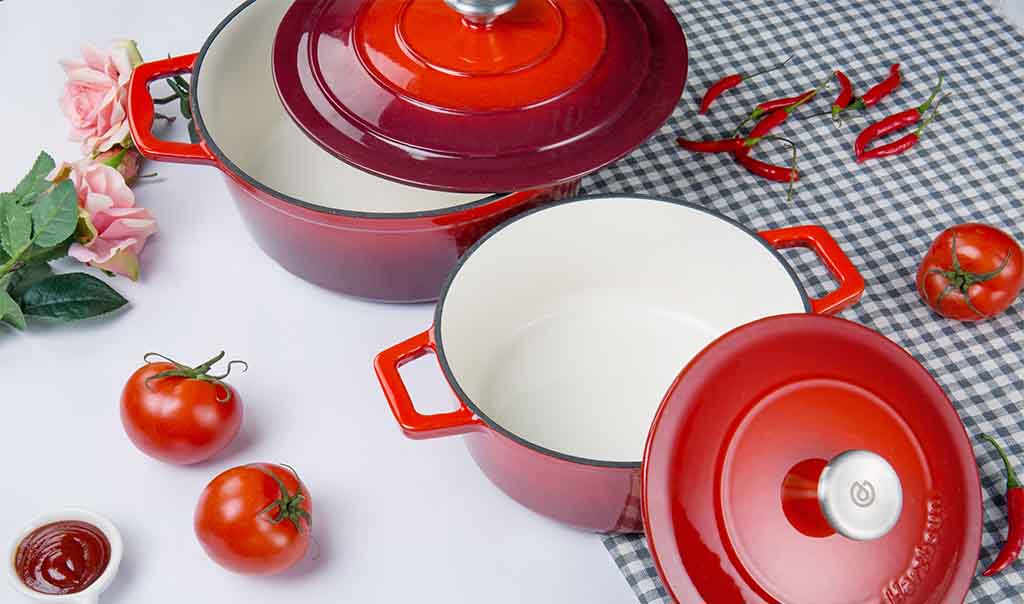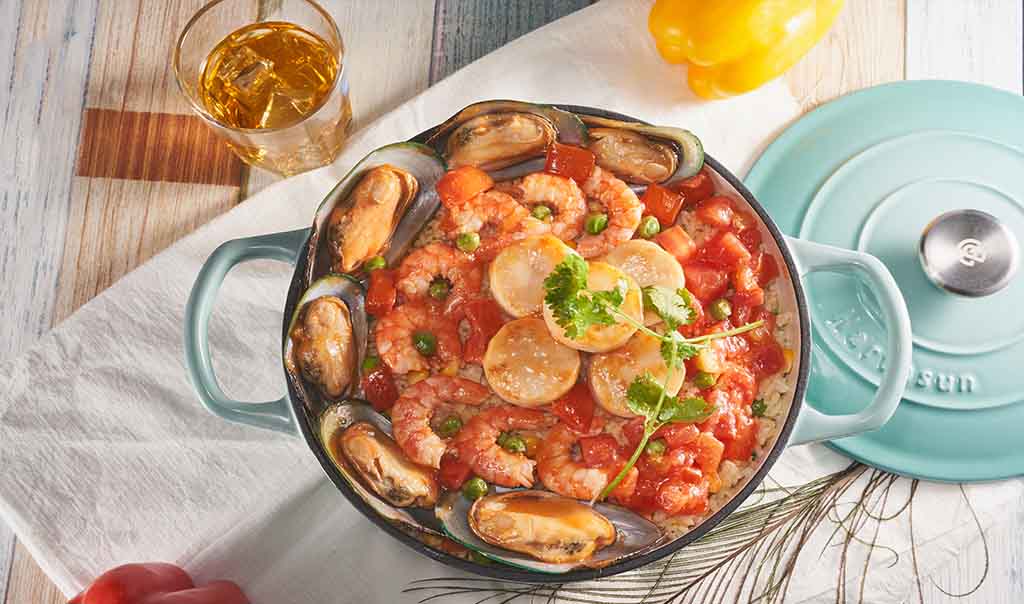Enameled Cast Iron Dutch Ovens
If you don't have a Enameled Cast Iron Dutch oven, you need to get one ASAP! Along with a frying pan and a sheet pan, they are one of the most versatile pieces of cookware you can own, especially if they are enameled cast iron dutch ovens.

What Is a Dutch Oven (And What Is It Used For)?
A Dutch oven is simply a deep, short-handled pot with a well-fitting lid:
Dutch ovens come in many different sizes, but for preparing meals for a family, 5-7 quarts is ideal; any smaller and you may find it too small for the roast, chicken, or batch of chili you want to make; any bigger, and it can be hard to handle, especially when full of food--cast iron is heavy even when it's empty.
If you find that you use your Dutch oven frequently, you may want a second, smaller one for side dishes. A 3- or 4-quart size is great for scalloped potatoes, mac and cheese, and countless other delicious sides.

A Dutch oven is an extremely useful and versatile piece of cookware. One of its primary functions is for braising--that is, stewing browned meat in a closed container with liquid: think short ribs and pot roast. The short handles make it easy to get in and out of the oven, while the snug, heavy lid holds in moisture and therefore flavor.
It doesn't stop there, though. You can use a Dutch oven for many other tasks, including sautéing (yes, it can function as a frying pan, too, making it ideal for one-pot meals), stock making, soups, stews, chili, as well as making rice and pasta. It's also great for stove top deep frying (especially enameled cast iron dutch ovens, which won't crash when you add food to the hot oil).
One more truly great use for your Dutch oven is baking bread. The lid holds in steam so your bread gets that wonderful crispy crust. A Dutch oven is so versatile, it may even be more useful than a skillet, depending on how you like to cook.
Why Cast Iron and Why Enamel?
Like all cookware, Dutch ovens are available in many materials, including stainless, ceramic, nonstick, and regular cast iron (non-enameled). You may own a stainless or nonstick Dutch oven that you got in a set of cookware. But even if you do, you should consider investing in an enameled cast iron one.
Why? Because cast iron is the best material you can use for braising and other low-n'-slow cooking methods, both stove top and oven. The heavy construction and heat retention properties also make it ideal for baking bread, too (you just won't get the crispy crust effect from a pot with a lighter lid).
Why enamel? Enamel is tough as well as easy to keep clean, so it makes the pot lower maintenance than bare cast iron. It's non-reactive, so you never have to worry about rusting or acidic foods reacting with it. Enamel also comes in a lot of colors so it's prettier than bare cast iron, which may or may not be a factor in your purchasing decision. You can set a enameled cast iron dutch oven right on your table and serve from it, so you may prefer a pretty one that matches your decor.
Enameled cast iron dutch ovens--the most useful, most versatile, most durable type of Dutch oven you can get. And remember that it also has the best heating properties for what most people use their Dutch ovens for more on heating in a minute.
